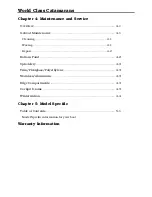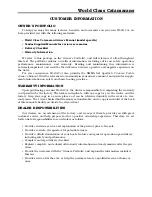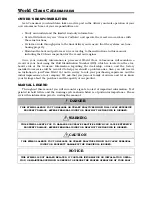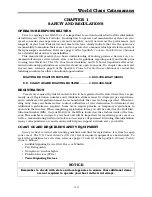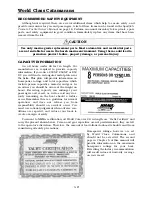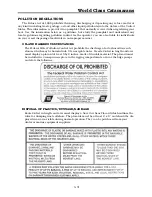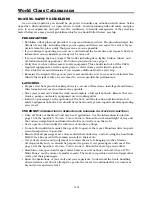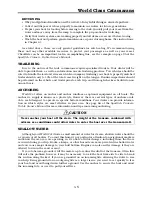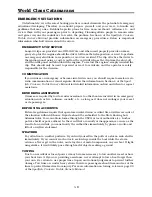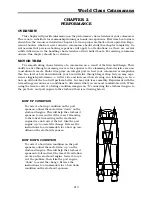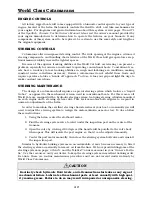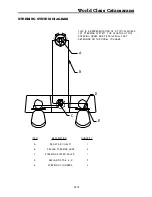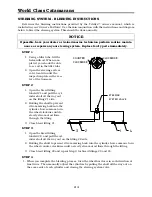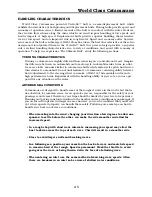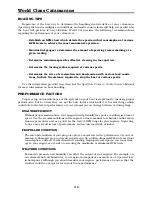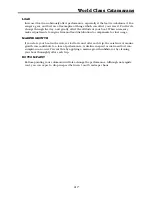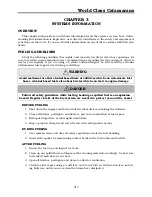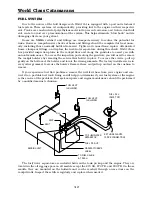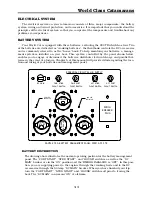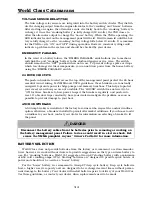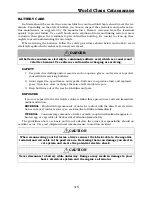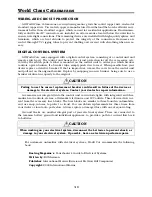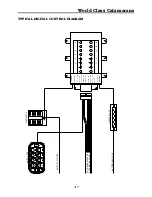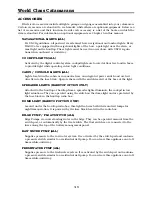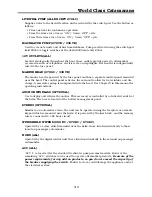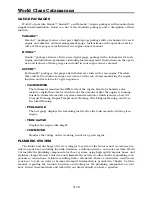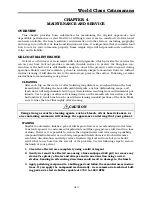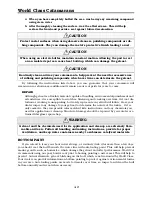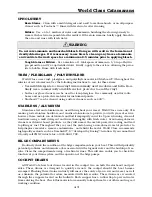
World Class Catamarans
2-5
HANDLING CHARACTERISTICS
World Class Catamaran’s patented Vectroflo™ hull is a semi-displacement hull, which
exhibits characteristics of both planing and displacement hulls. Planing hulls provide speed and
economy of operation since a limited amount of the hull is in contact with the water. However,
they feature flat sections along the chine which can result in poor handling at low speeds and
harder impacts at high speed. Displacement hulls provide superior handling characteristics,
even at low speed, and an improved ride in rough water. Speed and economy suffer however,
since more of the hull is submerged. World Class has taken the best characteristics of these two
designs and incorporated them in the Vectroflo™ hull. Our proven design provides a superior
ride, excellent handling characteristics in a variety of conditions, and speed with economy of
operation. To help you experience “The Ultimate Ride”, study the following sections.
TURNING CHARACTERISTICS
Turning a catamaran is slightly different than cornering on a conventional vessel. Imagine
the difference between an automobile and a motorcycle. Automobiles take turns in a flat-
ter, more stable, manner similar to catamarans hulls, while motorcycles pitch hard into a
turn similar to a monohull. Do not underestimate a catamaran’s cornering ability however,
hard adjustments to the steering wheel can make a World Cat bite quickly and execute
high performance turns. Experiment with the handling ability of your cat so you are pre-
pared for any situation on the water.
ADVERSE SEA CONDITIONS
Catamarans are designed to handle some of the roughest waters in the world, but that is
no substitute for common sense. As an operator you are responsible for the safety of your
passengers and vessel; therefore, your trips should be limited by your level of experience.
Planning and paying constant attention to the weather and sea conditions is paramount. If
you are forced to operate in dangerous seas however, you can be confident that your World
Cat, when operated properly, can handle them safely. Following are some tips on how to
handle your boat in adverse sea conditions.
• When traveling into the wind, changing your direction a few degrees to allow one
sponson to settle before the other, can make the ride smoother and allow for
increased speed.
• In a rough chop with short wave intervals, increasing your speed may allow the
boat to skim across the tops of each wave. This will result in a smoother ride.
• Steer to avoid larger swells and breaking waves.
• In a following sea, position your vessel on the back of a wave and match its speed
to remain ahead of the trough. Speed is paramount. Work the throttle to avoid
going over the wave or being thrown down the face of a following wave.
• When entering an inlet, use the same method of matching wave speeds. Often
there are breakers in an inlet so be aware of shallow water conditions.

